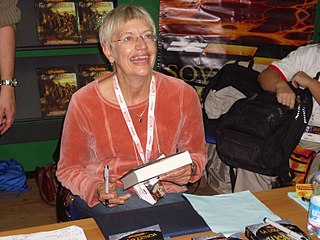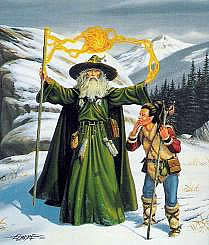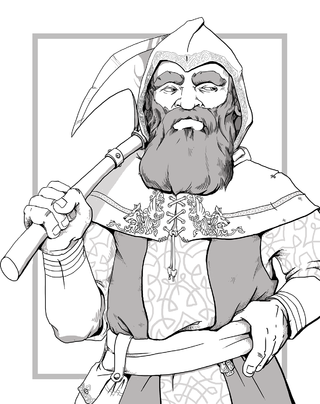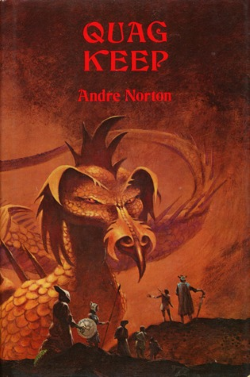Related Research Articles

TSR, Inc. was an American game publishing company, best known as the original publisher of Dungeons & Dragons (D&D). Its earliest incarnation, Tactical Studies Rules, was founded in October 1973 by Gary Gygax and Don Kaye. Gygax had been unable to find a publisher for D&D, a new type of game he and Dave Arneson were co-developing, so he founded the new company with Kaye to self-publish their products. Needing financing to bring their new game to market, Gygax and Kaye brought in Brian Blume in December as an equal partner. Dungeons & Dragons is generally considered the first tabletop role-playing game (TTRPG), and established the genre. When Kaye died suddenly in 1975, the Tactical Studies Rules partnership restructured into TSR Hobbies, Inc. and accepted investment from Blume's father Melvin. With the popular D&D as its main product, TSR Hobbies became a major force in the games industry by the late 1970s. Melvin Blume eventually transferred his shares to his other son Kevin, making the two Blume brothers the largest shareholders in TSR Hobbies.
Dragonlance is a shared universe created by Laura and Tracy Hickman, and expanded by Tracy Hickman and Margaret Weis under the direction of TSR, Inc. into a series of fantasy novels. The Hickmans conceived Dragonlance while driving in their car on the way to TSR for a job interview. Tracy Hickman met his future writing partner Margaret Weis at TSR, and they gathered a group of associates to play the Dungeons & Dragons role-playing game. The adventures during that game inspired a series of gaming modules, a series of novels, licensed products such as board games, and lead miniature figures.

Tracy Raye Hickman is an American fantasy author and designer of games and virtual reality (VR) experiences. He co-authored the original Dragonlance novels with Margaret Weis as well as numerous other books. He also designed and created role playing game material while working for TSR and has cowritten novels with his wife, Laura Hickman. He is the author or co-author of over 60 books.

Margaret Edith Weis is an American fantasy and science fiction author of dozens of novels and short stories. At TSR, Inc., she teamed with Tracy Hickman to create the Dragonlance role-playing game (RPG) world. She is founding CEO and owner of Sovereign Press, Inc and Margaret Weis Productions, licensing several popular television and movie franchises to make RPG series in addition to their own.
Jeff Grubb is an author of novels, short stories, and comics, as well as a computer and role-playing game designer in the fantasy genre. Grubb worked on the Dragonlance campaign setting under Tracy Hickman, and the Forgotten Realms setting with Ed Greenwood. His written works include The Finder's Stone Trilogy, the Spelljammer and Jakandor campaign settings, and contributions to Dragonlance and the computer game Guild Wars Nightfall (2006).

Kender are a type of fantasy race first developed for the Dragonlance campaign setting for the Dungeons & Dragons fantasy role playing game published by TSR, Inc. in 1984. The first kender character was created by Harold Johnson as a player character in a series of role-playing adventures co-authored by Tracy Hickman and Margaret Weis. Weis and Hickman's Dragonlance shared world novels introduced the kender to readers and players alike, largely through the character Tasslehoff Burrfoot, who became one of the main protagonists in the series.

Ravenloft is an adventure module for the Dungeons & Dragons (D&D) fantasy role-playing game. The American game publishing company TSR, Inc. released it as a standalone adventure booklet in 1983 for use with the first edition Advanced Dungeons & Dragons game. It was written by Tracy and Laura Hickman, and includes art by Clyde Caldwell with maps by David Sutherland III. The plot of Ravenloft focuses on the villain Strahd von Zarovich, a vampire who pines for his lost love. Various story elements, including Strahd's motivation and the locations of magical weapons, are randomly determined by drawing cards. The player characters attempt to defeat Strahd and, if successful, the adventure ends.

Douglas Niles is a fantasy author and game designer. Niles was one of the creators of the Dragonlance world and the author of the first three Forgotten Realms novels, the Star Frontiers space opera setting and the Top Secret S/I espionage role-playing game.

A dwarf, in the Dungeons & Dragons (D&D) fantasy roleplaying game, is a humanoid race, one of the primary races available for player characters. The idea for the D&D dwarf comes from the dwarves of European mythologies and J. R. R. Tolkien's novel The Lord of the Rings (1954–1955), and has been used in D&D and its predecessor Chainmail since the early 1970s. Variations from the standard dwarf archetype of a short and stout demihuman are commonly called subraces, of which there are more than a dozen across many different rule sets and campaign settings.
The flexibility of the Dungeons & Dragons (D&D) game rules means that Dungeon Masters (DM) are free to create their own fantasy campaign settings. For those who wanted a pre-packaged setting in which to play, TSR, Wizards of the Coast (WotC), and other publishers have created many settings in which D&D games can be based; of these, the Forgotten Realms, an epic fantasy world, has been one of the most successful and critically acclaimed settings. Many campaign settings include standard sword and sorcery environments, while others borrow Asian, Central American, swashbuckling, horror and even space-travel themes.
Jean Rabe is an American journalist, editor, gamer and writer of fantasy and mystery. After a career as a newspaper reporter, she was employed by TSR, Inc. for several years as head of the Role Playing Game Association and editor of the Polyhedron magazine. Rabe began a career as a novelist for TSR and Wizards of the Coast, and over the last 30 years has produced over three dozen books and scores of short stories, at first in the genres of game-related fantasy and science fiction and later as an author of mystery novels.
The Dungeons & Dragons (D&D) fantasy role-playing game has been adapted into many related products, including magazines, films and video games.
The role-playing game Dungeons & Dragons (D&D), which receives significant attention in the media and in popular culture, has been the subject of numerous controversies. The game sometimes received unfavorable coverage, especially during its early years in the early 1980s. Because the term D&D may be mistakenly used to refer to all types of role-playing games, some controversies regarding D&D mistakenly pertain to role-playing games in general, or to the literary genre of fantasy. Some controversies concern the game and its alleged impact on those who play it, while others concern business issues at the game's original publisher, TSR. The game is now owned by Wizards of the Coast.

Laura Curtis Hickman is an American fantasy author, best known for her works in game design and fantasy novels cowritten with her husband, Tracy Hickman.
The DL series is a series of adventures and some supplementary material for the Advanced Dungeons & Dragons role playing game. These modules along with the Dragonlance Chronicles trilogy of novels, which follow one possible adventure series through the modules, were the first published items that established the Dragonlance fictional universe. The original DL series was released from 1984 to 1986, with the final two modules added to it in 1988. In the 1990s these roleplaying adventures from the original series were collected and revised for 2nd Edition AD&D as the three DLC Dragonlance Classics modules. There were also versions of the module series released in 1999, 2000 and 2006.

Return to Quag Keep, a 2006 fantasy novel by Andre Norton and Jean Rabe, is a sequel to the fantasy novel Quag Keep written by Norton in 1978. Although Norton and Rabe began their collaboration in the early 2000s, Norton's death in 2005 meant that Rabe had to complete the novel on her own. Many critics were not impressed with the finished work.
The Dragonlance Chronicles is a trilogy of fantasy novels written by Margaret Weis and Tracy Hickman, which take place in the Dragonlance setting. This series is the first set of Dragonlance novels, and is followed by the Dragonlance Legends series.
This is a complete list of works by American science fiction and fantasy author Margaret Weis.

Quag Keep is a fantasy novel by Andre Norton published in 1978. Written after Norton had participated in a session of Dungeons & Dragons with Gary Gygax, it was the first novel to be set in Gygax's World of Greyhawk, and the first to be based on the game of D&D.
References
- ↑ Norton, Andre; Rabe, Jean (2008). Return to Quag Keep. Macmillan. p. 3. ISBN 978-0-7653-5152-4.
- ↑ Mackay, Daniel (2001). The fantasy role-playing game: a new performing art. McFarland. pp. 18–19. ISBN 0-7864-0815-4.
- ↑ Clute, John; Grant, John (1999). The encyclopedia of fantasy (2nd ed.). Macmillan. p. 383. ISBN 0-312-19869-8.
- 1 2 Oxoby, Marc (2003). The 1990s. Greenwood Publishing Group. p. 148. ISBN 0-313-31615-5.
{{cite book}}:|work=ignored (help) - ↑ Mackay, Daniel (2001). The fantasy role-playing game: a new performing art. McFarland. p. 20. ISBN 0-7864-0815-4.
- 1 2 Buker, Derek M. (2002). The science fiction and fantasy readers' advisory: the librarian's guide to cyborgs, aliens, and sorcerers . ALA Editions. pp. 127–128. ISBN 0-8389-0831-4.
{{cite book}}:|work=ignored (help) - ↑ "R.A. Salvatore New Book Deal". Wizards of the Coast. January 11, 2010. Archived from the original on January 17, 2010. Retrieved July 30, 2019.
- ↑ "Dungeons & Dragons Teams Up With HarperCollins for Young Adult Novels and Graphic Novels". ComicBook.com. July 6, 2021. Archived from the original on 2021-07-07. Retrieved 2021-07-06.
- ↑ Brown, Charles N.; Contento, William G. (January 2, 2010). "Site Directory". The Locus Index to Science Fiction. Lotus Publications . Retrieved 2010-01-25. Note: individual authors can also be confirmed by a search from the Lotus home page.
- ↑ Slavicsek, Bill; Baker, Richard (2005). "The Ten Best D&D Novels". Dungeons & dragons for dummies. For Dummies. pp. 373–375. ISBN 0-7645-8459-6.
- ↑ Modine, Austin (March 4, 2008). "Dungeons and Dragons co-creator Gary Gygax dies". The Register. Retrieved 2010-01-23.